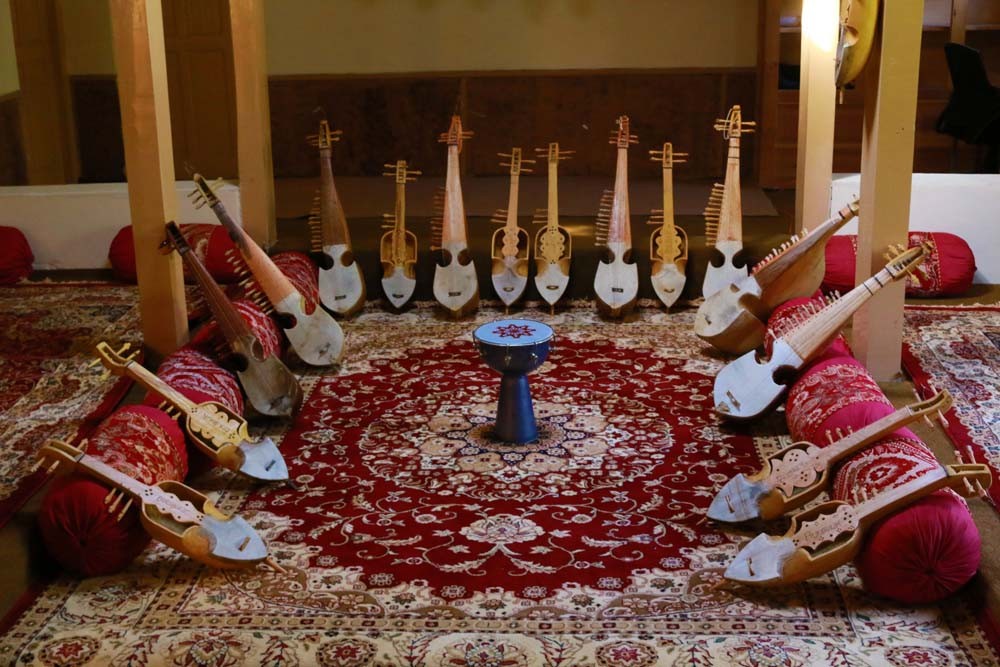
Exploring Gulmit and Karimabad, where schools still care about inculcating poetry and oratory in students, where a café full of people listen to speakers on photography

As a Pakistani, travelling abroad can mean first-time exposure to peoples of different races, religions and cultures. As a Punjabi, travelling the country can have a similar impact. Too often living in Karachi, Lahore and Islamabad, and consuming the mainstream media, the whole country’s culture can come across as largely Urdu/Punjabi, homogeneously Muslim, and urban. Gulmit village in Upper Hunza, as such, proved to be an education for me.
While exploring Gulmit on foot we came across a stone building within a large clearing, a private school called Al-Amyn, a co-educational community-led initiative producing quality graduates for the past 25 years.
Much bigger than most schools in congested urban areas, Al-Amyn has no high walls, no armed security and no barbed wires. Some of its students sat outside in a circle, interacting seamlessly with nature as they engaged with their bright young, female teachers. In the winters, the school administration encourages teachers to teach outside in the sun. The Karakoram mountains, unhindered by walls or barbed wires, formed a stunning backdrop to the children’s work and play.
We happened to enter just when the school was conducting the opening ceremony of its new, state-of-the-art computer lab equipped with a dozen new laptops. A group of students, around seven-years-old, filed into the sunny lab as soon as the ribbon was cut and burst into an original welcome poem that was delivered in unison with impeccable eloquence, a reminder to me of a time when schools still cared about inculcating poetry and oratory in all their students.
The poem was also refreshingly indigenous despite being in English, lyricizing the beauty of the Hunzan mountains and flowers.
There we stood, in the middle of nowhere, watching some clearly superior teaching and management compared to a lot of what I have witnessed as a teacher in Lahore, and I was glad to have my sense of urban centrality crumble a bit more.
Entrepreneurially speaking, we also witnessed a first-rate small business, The Gulmit Carpet Centre. All the carpets there, hand-knotted (and rather expensive for people like us), are produced by women from Gulmit.
The centre is run solely by women, from sales to the actual ‘manning’ of the store.
Then there is the Bulbulik School, a space for the teaching of music to local youth, some of whom came to our hotel that evening for a night of music and folk dance. There I heard for the first time what is called ‘the national anthem of Gilgit Baltistan’, a beautiful ditty penned by Zafar Waqar Taj, the first ever Deputy Commissioner of Hunza’s Nagar District.
Sab phool hayn, ik guldaan ke hayn
Hum Gilgit Baltistan ke hayn
Hum betay hayn kohsaron ke
Barfeelay mast nazaaron ke
Hum baam-e-jahaan ke baasi hayn
Hum saae chaand sitaaron ke
Khud apna rutba jaantay hayn
Hum Gilgit Baltistan ke hayn
(We are flowers of the same bouquet
Us who belong to Gilgit-Baltistan.
We are sons of the mountains
Of snowy enchanting scenery
Dwellers of the roof of the world
Who shadow the moon and the stars
We are proud of our place in the world
We who belong to Gilgit-Baltistan)
Though the song’s official video on YouTube has a stale, 1980s-PTV feel to it, that night at the hotel, the Bulbulik boys breathed youthful gusto into it with a layer of choppy rubab strains and steady percussion. Hum K-2 Rakaposhi ke/Shandoor ke Nanga Parbat ke (we are of K-2 and Rakaposhi/of Shandoor and Nanga Parbat), they roared, seguing into more ‘universal’ hits that everyone joined them in: Dama Dum Mast Qalandar, Mayn Bhee Pakistan Hoon, turning the dull hotel dining room into a celebration of Pakistani diversity.
The next day we left Gulmit bright and early for the more commercial Karimabad in Central Hunza. Karimabad central is like the Murree of yore, commercial but not utterly ruined by commercialisation, yet. It has stylish handmade jewellery at every turn and cafes that attract both locals and foreigners, who we saw surprisingly plenty of in Karimabad, German and Dutch and British, camping out on our hotel grounds.
Read also: Falling for Hunza
We went to Café de Hunza for its famous walnut cake, that I didn’t care much for, and on our way back passed a café full of people listening to some speakers sitting at the far end of the room. Intrigued, I went inside and discovered that it was a talk by local photography enthusiasts. Tips were being passed around on how to get published, what camera to buy, how to take the best photographs etc. The energy and enthusiasm in the place was palpable.
I stepped out after a bit to take in the full moon hanging above the snow-covered Karakoram mountains. It felt good to be acquainted with this side of Pakistan, far from the gloom and doom of the politics that consume us.
Exploring Gulmit and Karimabad, where schools still care about inculcating poetry and oratory in students, where a café full of people listen to speakers on photography